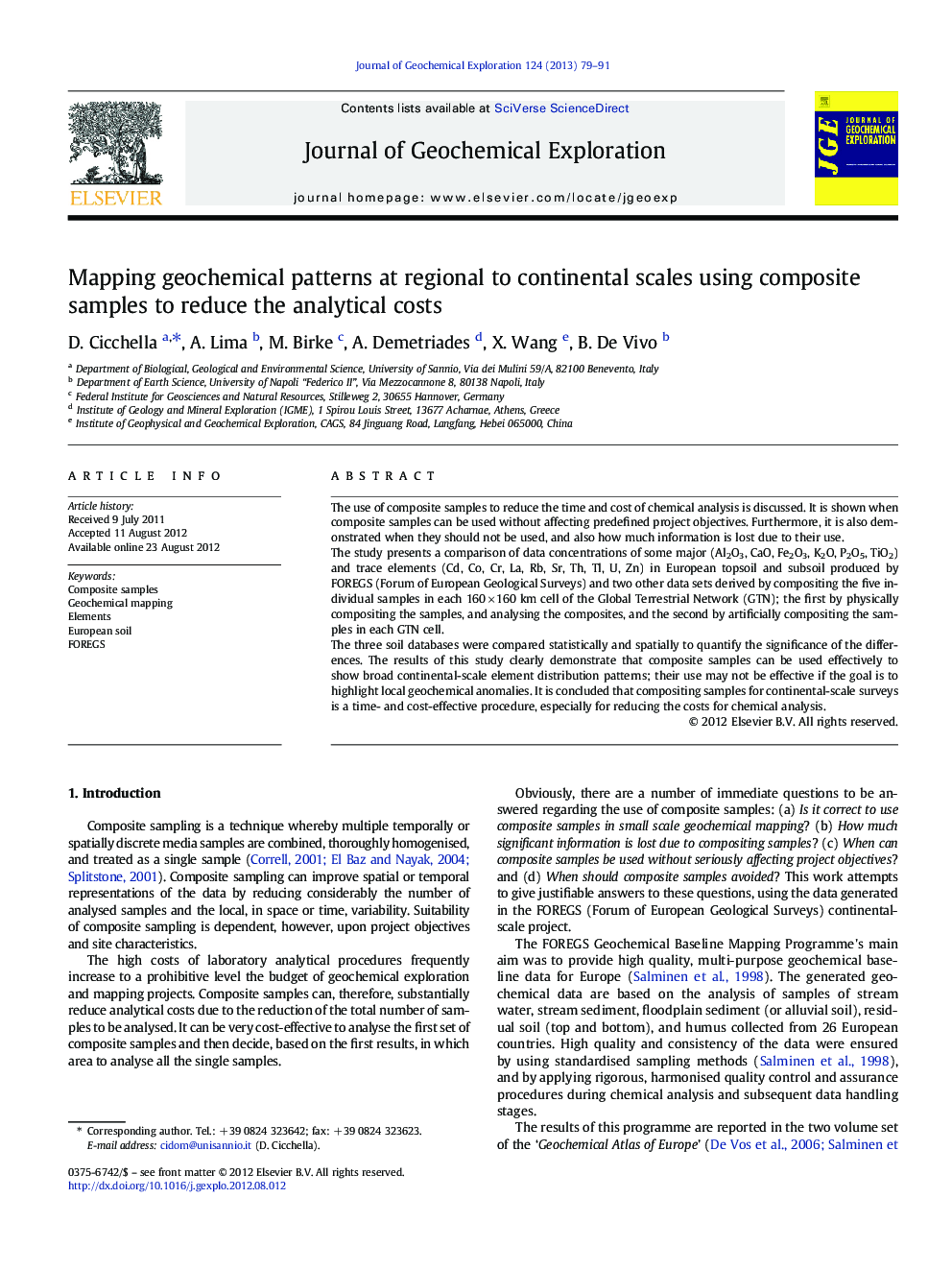| Article ID | Journal | Published Year | Pages | File Type |
|---|---|---|---|---|
| 4457683 | Journal of Geochemical Exploration | 2013 | 13 Pages |
The use of composite samples to reduce the time and cost of chemical analysis is discussed. It is shown when composite samples can be used without affecting predefined project objectives. Furthermore, it is also demonstrated when they should not be used, and also how much information is lost due to their use.The study presents a comparison of data concentrations of some major (Al2O3, CaO, Fe2O3, K2O, P2O5, TiO2) and trace elements (Cd, Co, Cr, La, Rb, Sr, Th, Tl, U, Zn) in European topsoil and subsoil produced by FOREGS (Forum of European Geological Surveys) and two other data sets derived by compositing the five individual samples in each 160 × 160 km cell of the Global Terrestrial Network (GTN); the first by physically compositing the samples, and analysing the composites, and the second by artificially compositing the samples in each GTN cell.The three soil databases were compared statistically and spatially to quantify the significance of the differences. The results of this study clearly demonstrate that composite samples can be used effectively to show broad continental-scale element distribution patterns; their use may not be effective if the goal is to highlight local geochemical anomalies. It is concluded that compositing samples for continental-scale surveys is a time- and cost-effective procedure, especially for reducing the costs for chemical analysis.
► It is appropriate to use composite samples in small scale geochemical mapping. ► Composite samples can be used to delineate regional or continental patterns. ► Compositing samples makes possible the reduction of analytical costs.
